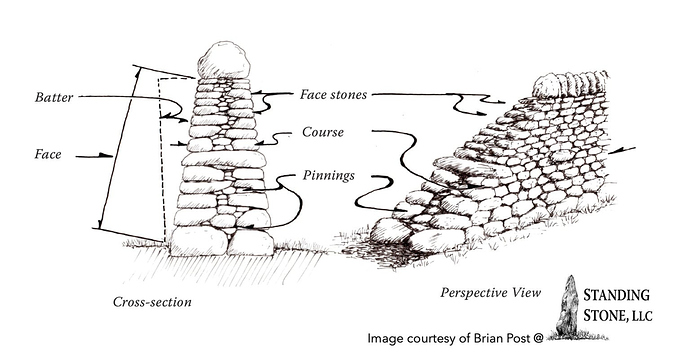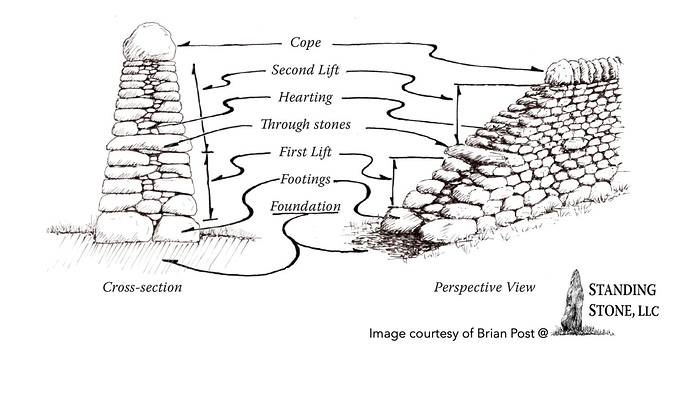Every spring I must take out about five hundred stones from our paddocks — it’s usually four or five wheelbarrow loads before I get sick of the project. Most are the size of large grapefruits, others can be larger but rarely so big I can’t pick them up.
Every year, I stack them along the corner fence. I’ve gotten a nice little line going now. And yet every spring, that wall is collapsed again.
We have two hundred year old stone walls marking our property line that haven’t budged in the twenty something years I’ve seen them. WHAT is the secret?! Is it because these early farmers didn’t have pesky TBs to dismantle the rocks? Is it how I’m stacking?
I’ve done light reading and even asked landscaping friends about this topic. They all have different opinions but seem to be in agreement that you take the largest pieces as the base and then top with the small. When I do this, they don’t stay for longer than a few months. Part of it must be finding the right placement for the particular rock in hand - but how did these people make immortal rock walls some two hundred years ago with no mud, cement, or sticking agent? Anyone have any tips for a rock stacker that doesn’t seem to be too good at stacking?

 . He built over 1800 feet of stone wall, and lots of it is still in great shape 20 years later.
. He built over 1800 feet of stone wall, and lots of it is still in great shape 20 years later.


